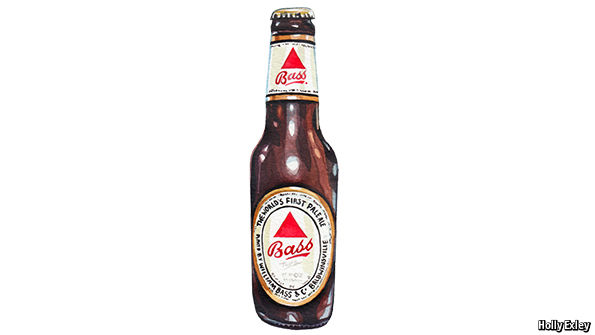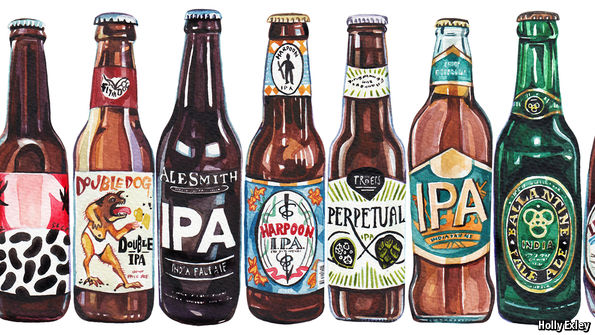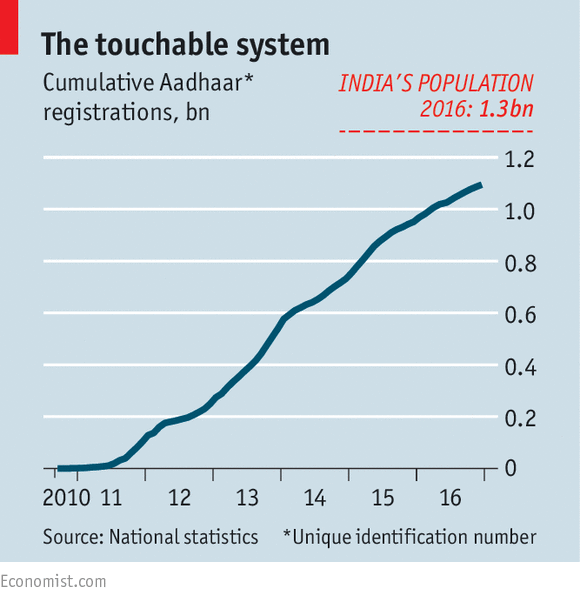Lagers may be ubiquitous but India Pale Ales are beers with a backstory
BEER is for drinking. But beer is also an occasion for conversation—and, if good enough, a subject for it, too. That is where India Pale Ales, or IPAs, come into their own. Few beers incite and enrich conversation as much. Their distinctive character—the “firm bitterness [that] lingers long and clean” in one, the “complex aromatic notes of citrus, berry, tropical fruit and pine” in another—spur discussions that spill over from tap rooms to websites with ease. The plethora of craft brewers that has sprung up over the past few decades provides ample scope for arguments about the relative merits of local brews and far-flung ones—with far-flung, these days, meaning from more or less anywhere on Earth.
And then there is the beer itself. A child of Britain’s industrial revolution and imperial expansion that rose to world-straddling greatness, IPA went on to be humbled by its upstart rival, lager. It had all but vanished when plucky supporters restored it to life and once more put the world at its feet. Here is a beer with a back story.
In the 18th century the British East India Company, originally set up to trade spices, turned its attention increasingly to importing fine cotton and silk from India. Its East Indiamen, “lords of the ocean” bigger than any other sailing vessels at the time, brought holds full of fabric back to London from Bengal, Bombay and Madras. But on the outward journey the holds were largely empty. A generous outbound allowance of cargo, eventually up to 50 tonnes each, was offered to officers and crew as a perk.
Boredom between the comings and goings of the ships led company men in India to make an “art-form of feasting and boozing”, according to Pete Brown, whose book “Hops and Glory” tells the story of IPA. To help this art-form along, wily entrepreneur-seamen packed the holds with hams and cheeses, crockery and glassware and good supplies of drink, mainly beer and wine, sometimes madeira picked up en route. The Company encouraged the imports, even taking an interest in guaranteeing their quality. After all, if the men’s carousing was not supported by wholesome supplies from home they might turn to local alternatives such as arak, which would surely send them mad.
By the late 18th century George Hodgson’s Bow Brewery had become the main supplier to this trade. The brewery was close to the East India Company’s headquarters at the confluence of the Lea and the Thames in east London, so Hodgson could schmooze captains and crew in local taverns. He offered them beer on generous credit terms—necessary given that the round trip could put off payment for a year or more.
The troops in India may have preferred darker, sweeter porter, but the wealthier traders hankered after more refinement. Hodgson’s version of pale ale—a lighter-coloured bitter that was a recent innovation—gave them what they wanted. Its (relative) pallor came from its malt, which is a grain, usually barley, which has been heated and dried. Sometimes called the “soul of beer”, malt imparts sweetness, colour and the starch that is broken down into alcohol.
Until the 17th century the kilns used for malting were fired with wood or straw, which gave beers a smoky flavour, a deep brown colour, and a devilish lack of consistency. The development of coke, a coal from which impurities have been baked out, changed all that. Histories of the Industrial Revolution rightly point to coke’s importance in ironmaking. But as coke-fired blast furnaces began to produce cast iron in the early 18th century coke also found its way into maltings. Its clean burning produced a paler, subtler and more consistent product, and though darker, sweeter styles still predominated, brewers started to aim those pale ales at the palates of wealthier drinkers.
Pales into significance
Hodgson’s pale ale was strong and heavily dosed with hops, which are a preservative as well as a bitter counterpoint to the sweetness of the malt. Its strength and savour allowed it to withstand a long voyage in the bowels of a ship. Indeed its drinkers believed the beer got better and better as it withstood the buffeting of the waves and the wild swings in temperature on a journey around the Cape of Good Hope and up to the Bay of Bengal. On those occasions when the beer fell foul of bacterial infection—plenty of ales turned up “sour” in India—the pungent hoppiness went some way to disguising the problem.
The generous credit Hodgson offered, along with his willingness to flood the market with cheap booze when competitors tried to gain a foothold, gave him something close to a monopoly. Then he overreached. First he tightened the credit terms offered to his ad hoc salesforce of seafarers. Second, he started to export the beer in his own ships to exert more control over the trade and expand his business. Setting up as a rival trader, albeit in the opposite direction, changed the light in which the East India Company saw him.
The red triangle logo appeared round the world—the first global brand
In 1822 Campbell Marjoribanks, one of the Company’s directors, sat down to dinner with Samuel Allsop, a brewer from Burton-on-Trent, hoping to clip Hodgson’s wings. Burton, in England’s Midlands, was already an important centre for beer. Its waters contained minerals so amenable to brewing that to this day beermakers the world over “Burtonise” their water by adding salts to ensure that it mimics that which is drawn from the town’s wells.
In the 18th century Burton had set up a valuable bilateral trade with Russia, which provided the wood in which Burton’s beer was barrelled; Catherine the Great was said to be “immoderately fond” of its strong, sweet, dark-brown beers. But exports to the Baltic came to a sudden end with the Napoleonic wars, and when trade was set to recommence the Russian court decided to encourage a home-grown brewing industry by slapping prohibitive duties on imported beer.

Allsop needed a new export market; Marjoribanks needed beer. However he also knew that Burton’s sweet ale was unlikely to find favour in India. So after the pudding had been cleared the Company man poured the brewer a glass of Hodgson’s ale, promising him a fortune if he could brew something similar. Even if he could, he faced problems. Getting the beer from Burton to London added to the costs. Hodgson, who had a well-established brand, would probably swamp the market when he got wind of the plan. All this, though, was overcome. The beer from Burton proved excellent and arrived in tip-top condition. Burton’s other brewers, jealous of Allsop’s success, joined the party and the Burton-brewed beer drove Hodgson’s out of favour.
As British interests in India grew so did the market, and more brewers started to make “East India ales” or “Ales for the Indian Market”. From Burton there was Bass, the town’s biggest brewer, and Worthington, another name still familiar to older British drinkers. Charrington of London (which later opened a brewery in Burton) and Tennents of Glasgow joined in, too. By the 1830s IPA began to supplant madeira and claret.
As IPA conquered taste buds in India it spread around the world, turning up in America, Australia and South-East Asia. Its popularity spread in Britain as empire-builders returning from India wanted to keep drinking it. Bass’s pale ale (in style, an IPA) made it Britain’s biggest brewery and its red triangle logo appeared round the world—some call it the first global brand. Its bottles were to pop up in Manet’s “A Bar at the Folies-Bergère” and many pictures by Picasso.
Ice and a slice
Burton’s global dominance was short-lived. Other drinks came along to challenge its hot-climate stronghold. Tonic water, which became available in 1858, went nicely with gin and the quinine it contained warded off malaria. The growing availability of ice made brandy and soda a more acceptable drink for the tropics. Most damagingly, in the late 19th century industrial refrigeration made it possible to brew beers year round (it had previously been a seasonal business unsuited to summers) and to make more beers of the crisp, light lager style popular in Germany and Bohemia. In the tropics, a beer that was refreshing when cold and could be brewed nearby had a lot going for it. In America, European immigrants brought a taste for such things with them. The brewers of Burton remained committed to IPA, and missed the boat.
Even at home IPA fell from favour. In 1870 William Gladstone, the prime minister, introduced the first excise duties to tax beer on its strength, penalising heady IPAs. Further tightening of taxation encouraged ever weaker beer that required no ageing and brought bigger profits. During the first world war grain was commandeered for food, and beers became weaker still. Beer with less alcohol did not require ageing so needed less hopping, saving brewers money. Burton’s brewers fell into the arms of larger competitors, later to close down altogether. The immense brick shells of the great Victorian breweries still dominate the town; but only Coors, an American interloper, still makes beer there at scale.
The rout of IPA was not complete. Deuchars, in Edinburgh, and Greene King, in Suffolk, continued to make authentic IPAs, though the beers lacked the kick of hops and alcohol that their forerunners boasted. Ballantine, founded in New Jersey in 1840 and modelled on the breweries of Burton, survived America’s turn to lager and, worse, prohibition, which did for many other American brewers. According to Mitch Steele, former brewmaster at Stone Brewery and author of another book on IPA, Ballantine’s was the single most important influence on the craft-beer movement that grew up after America’s prohibition-era restrictions on home brewing were relaxed in the 1970s, allowing a new generation to embrace beer first as hobby, then as trade.
The movement’s subsequent rise was driven by a fascination with history, with taste and with authenticity—that proved easily marketed to people who wanted beers they could talk about and savour. Many of its early beers were influenced by IPAs; the first to embrace the name was Grant’s IPA, in 1983. The new brewers relished the opportunity the style presented for showing off their skills, running wild with new varieties of hops—which turned out to grow very well in the Pacific Northwest—in search of distinctive personality. And IPA had the added attraction of being a forgiving beer. In weaker brews imperfections are shown up in sharp relief. Just as in Hodgson’s day, heavy hopping—adding different hops to the beer at various stages of brewing—can cover flaws.
As the craft-beer boom gathered pace, some sought to differentiate their brews by adding ever more hops. In 1994, Blind Pig Inaugural Ale marked the birth of the double IPA (with double the hops). Stone and Ballast Point in San Diego saw this hop-head market emerging and triple IPAs were born. West Coast IPA, fresh and fruity, has become a distinct style of beer.
Not all beer aficionados are pleased. Big, brash American hops like Cascade, Centennial, Columbus and Chinook lack the subtlety of their British cousins. Some IPAs are now almost undrinkably bitter. And the name is now applied willy-nilly. Red IPAs, wheat IPAs and black IPAs are really other styles of beer but with the hop count turned up.
Such are the bandwagon-jumping burdens of success. The flagship beers of small brewers are, more often than not, IPAs; almost every brewery makes one. They account for one in three craft beers sold in American bars; for many tipplers they are synonymous with craft beer itself. And as the movement has spread abroad, so has the inclination to make the heady, hoppy IPAs. It is the “global craft brew”, says Mr Brown.
Born in monopoly, IPA is triumphing through diversity. Everyone can have a home-town brew and an opinion. That is bad news for the vast brewers that dominate the large but shrinking global lager market. The competition flourishes at a local level and on a modest scale that the big brewers hardly know how to understand. The beer giants can, and do, buy up smaller “craft brew” IPA-makers; but there is always the risk that discerning drinkers could switch allegiance from their mass-produced lagers. The tipple that helped create the world’s first brewing giants could yet undermine the beermaking behemoths of today.



